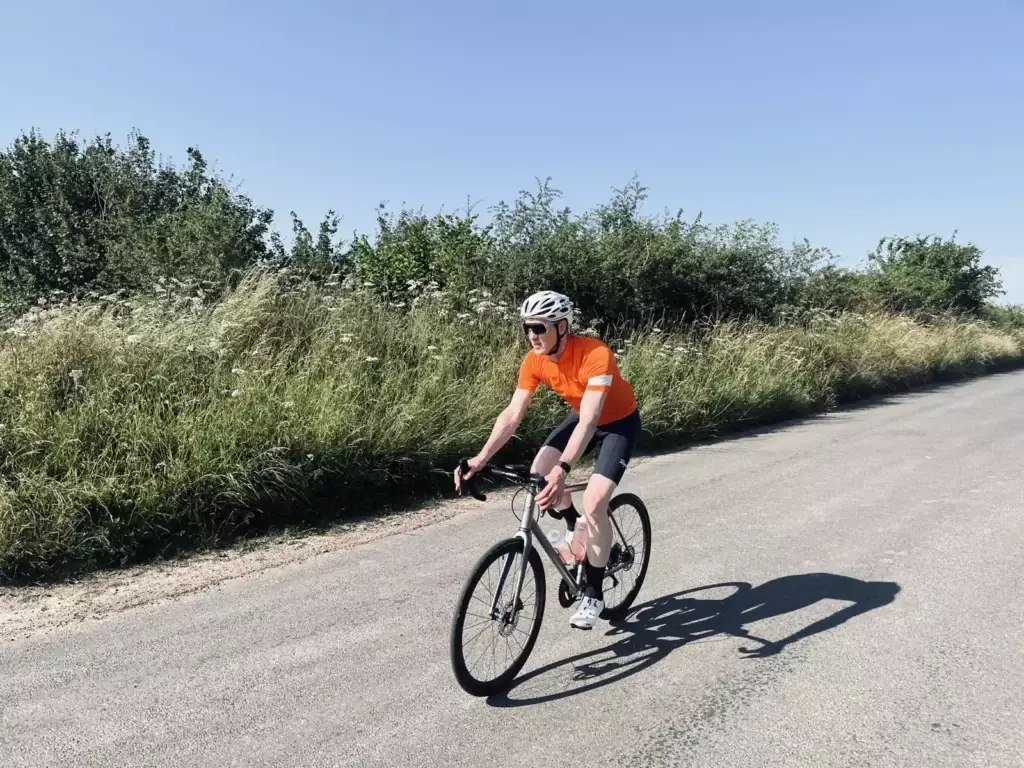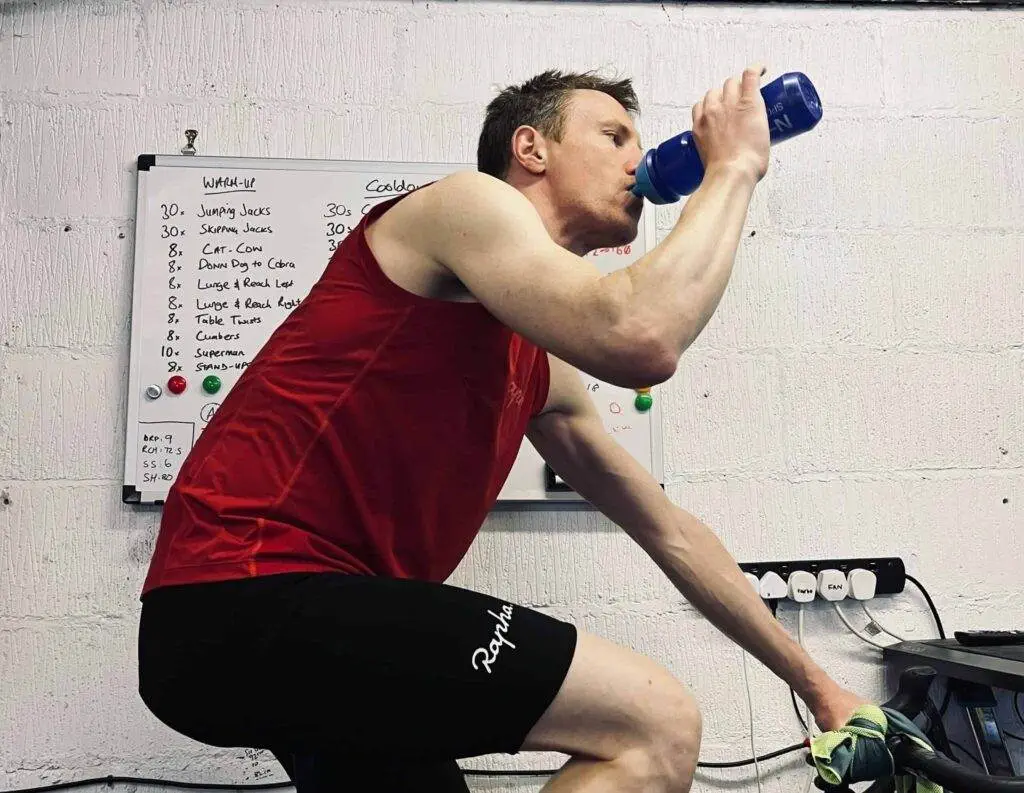If you’re ready to pedal toward success, you may want to start with the basics! Cycling base training is exactly what it sounds like. It’s building a strong foundation for more effective cycling and improving your overall fitness.
In this article, we’ll walk you through the benefits of cycling base training phase and how to avoid common training mistakes. We’ll also provide you with tips and tricks to help you take your cycling abilities to new heights. So what are you waiting for? Let’s ride!
Key Takeaways
- Cycling base training focuses on developing aerobic health.
- The top benefits of base training include better aerobic health and increased endurance. It’s also good for more effective fat-burning and better recovery and injury protection.
- To incorporate base training, you should start slowly and gradually increase the time and frequency of your rides.
- Some of the most common mistakes of base training pushing too hard without rest, overdoing the intensity, and ignoring proper nutrition and hydration.
- A trainer or coach can help to guide you in creating personalised training plans.
What is Cycling Base Training?
Base training for cyclists refers to a period of training that focuses on developing aerobic fitness. This solid ‘base’ is important for building a stronger aerobic system and cardiovascular fitness. Of course, it can also improve your cycling efficiency.
During base training, cyclists typically maintain a consistent effort level. This involves riding at a steady, moderate intensity. The goal here is to build a solid fitness base by gradually increasing the intensity and duration of their base training rides over time.
Base training is essential for cyclists because it helps the body adapt to the demands of cycling.
By working consistently and establishing a good base, cyclists can then create a more specific and intense training plan. They can slowly introduce interval training and high-intensity efforts that target specific aspects of their workout like speed and average power.

The Benefits of Cycling Base Training
Aerobic base training for cyclists can offer plenty of benefits. Some of the most common benefits include:
- Improved aerobic fitness: Traditional base training primarily targets the aerobic energy system. This system supplies oxygen to the muscles during endurance training. By practicing moderate-intensity training, you’ll be able to ride longer and struggle less.
- Increased endurance: Base training helps to build the foundation for better endurance. When you increase the duration of your rides, you can extend your ability to sustain your effort over longer periods without fatigue. Of course, this is essential for long-distance cycling events or rides.
- Enhanced fat burning: Moderate-intensity rides during base training can help to encourage your body to use fat as a fuel source. In turn, this can lead to improvements in your metabolic efficiency and better fat-burning during rides. As a result, you’ll have a better body composition and also increased endurance.
- Recovery and injury prevention: Base training is generally less intense than other forms of training. This gives you a better chance at recovery between rides. This can reduce your risk of injury and help you to maintain a consistent training plan schedule without fatigue or burnout.
- Technical development: When you focus on your aerobic base fitness, you can spend time refining your skills and technique. With less emphasis on intensity, you can also concentrate on your pedaling efficiency, bike handling skills, form, and control.
- Preparation for advanced training: Base training sets the stage for more intense training phases. By establishing a strong foundation, you can transition into a higher-intensity program with an increased training volume with ease.

How to Incorporate Cycling Base Training into Your Training Program
If you want to get started with base training but don’t know where to start, you’re not alone. But incorporating this training phase into your program isn’t hard at all!
Firstly, you’ll want to dedicate a specific period of time to your training. This usually ranges between a few weeks to a few months.
You’ll also want to decide how many days you can commit to your training. Ideally, you’ll want to aim for three to four days of riding a week for a more consistent training stimulus. Remember to start with a manageable volume and gradually work your way to more intense rides.
Another great way to introduce base training into your routine is to incorporate longer rides into your schedule. This can help you to build endurance as well as your fitness.
Don’t forget to supplement some of your training with cross-training exercises, though. These workouts will ensure you’re improving your overall fitness instead of only focusing on your aerobic system.
When you feel like you’ve established a solid base, you can start to transition into more specific and intense training phases.

Common Mistakes to Avoid During Cycling Base Training
When you start your base training, it may be helpful to be aware of some of the most common mistakes beginner cyclists make. Some of the easiest mistakes to make include:
- Starting too quickly: Base training is most effective when you start with a reasonable level of fitness. Before you dive into a training plan, you’ll need to improve your overall fitness and only then move on to low-intensity endurance training. Otherwise, you may be at risk of injury or overtraining.
- Pushing too hard: Even base training should include rest days. Pushing yourself too hard can lead to overtraining and decreased performance. So make sure to include rest days and lighter endurance and recovery rides into your training plan to allow your body to adapt and reset.
- Focusing on quantity over quality: Base training emphasizes building endurance and volume. However, it’s important to pay attention to the quality of your rides. You should always maintain proper form and technique to train more effectively.
- Overdoing intensity: Riding too hard during base training can hinder the aerobic adaptations you want to achieve. Ideally, you should stay within a moderate intensity range that you can comfortably maintain. You can also incorporate short bursts of your maximum sustainable power.
- No cross-training plan: Base training can improve your aerobic fitness. Still, it’s important to incorporate strength exercises to build your legs and core. That way, your body won’t be in too much shock when you graduate from lower-intensity endurance training to high-intensity efforts.
- Improper nutrition and hydration: Proper nutrition and hydration are essential for optimizing your training and recovery periods. You should aim to fuel your rides before, during, and after your workout. Keep water with you at all times to ensure you’re properly hydrated.
- Ignoring your limits: Everyone’s fitness level, abilities, and response to training are different. You should avoid comparing yourself to others and focus on your own progress. Gradually push yourself to increase your duration or intensity according to your individual abilities. And remember to listen to your body when it tells you to rest.

Next Step: Consult with a Professional Trainer or Coach
The next step in your cycling journey is to consider consulting with a professional trainer. Alternatively, you can sign up for a few training camps.
With a coach, you’ll have access to expert advice and knowledge on how to set up a training plan that suits you. You can also get an objective opinion on your progress and how to kick your training into high gear.
Of course, coaches can also teach you the proper techniques and skills you need for optimal performance during the cycling season. You can also use your trainer as a source of motivation (and accountability) so that you can reach your goals and navigate any setbacks you may have.
FAQs
How do I track and measure progress during base training?
You can use a GPS device or cycling computer to monitor metrics like distance, speed, and time. A heart rate monitor can provide insight into your cardiovascular fitness and training stress. You can also use a journal or app to track the details of your rides and visualise your progress.
Can I participate in races or events during the base training phase?
Usually, cyclists start the cycling season with base training as a way to improve their fitness. When you’re in this phase of training, it may not be the best idea to dive straight into a race. Instead, you can participate in non-competitive events or get some friends together for a group ride.
Can I do base training indoors on a stationary bike or indoor trainer?
Yes, you can do base training indoors on a stationary bike. Indoor trainers can actually provide a more controlled environment for you to train in. This can leave you to focus on maintaining a consistent intensity and building your fitness.
